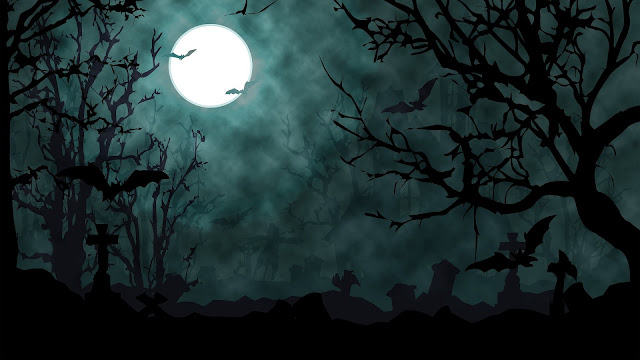A Ramble Through Old Graveyards
 |
| Père Lachaise Cemetery: Photo from Pixabay |
I like wandering through old graveyards because they tend to be peaceful places. Some are historic, some are oases of inspiration, and some are just plain beautiful.
My earliest memory of a graveyard was when I was about six. My family was visiting relatives in Johore, Malaysia, and I was playing hide-and-seek with my brother and the cousins. I followed the older kids into an old Chinese cemetery and we hid among the graves.
My brother and I crouched behind a tombstone with raised sides. It was nicer than the other headstones, but neglected for all that. The cement was chipped and the site was weedy.
There was a black-and-white photograph of an elderly woman on the tombstone. It was presumably whoever was buried at that spot. From where I squatted, I was face-to-face with her.
Her eyes seemed to bore into me. I was petrified. I looked away, but I could still feel her staring at me. My brother eventually stood up and ran away, and I was quick—and very relieved—to chase after him. When I went to bed that night, I fully expected the old lady to visit me in my dreams.
She didn’t, but to this day I remember her baleful expression and my guilt for standing over her grave.
The scariest graveyard I visited was Père Lachaise Cemetery in Paris. The cemetery is huge (about 110 acres) and there are many famous people buried there, including Frédéric Chopin, Edith Piaf, Jim Morrison and Oscar Wilde.
Père Lachaise opened in 1804 and was Paris’s first garden cemetery. Its cobbled lanes meander under ancient trees and acres and acres of weathered stone mausoleums and monuments. Some of the edifices are placed so near to each other that it feels like you’re walking along a narrow alley in a cityscape of ornate, but rather stunted, buildings.
I saw the cemetery on a cold and bleak day in early spring. The dark clouds hanging above imbued the place with a somber and forlorn air. The monuments hemmed me in, making me feel isolated. It didn’t help that I was alone. The dead leaves skittered on the ground, stirred and tumbled by the wind. I kept looking over my shoulder, thinking someone was creeping up on me. I confess I was glad to get out of there.
One of the most poignant cemeteries I ever saw was the Mountaineers’ Cemetery in the Swiss town of Zermatt. It’s an unassuming graveyard with a gorgeous view of the Swiss Alps. It’s where the local townsfolk are buried. However, it also holds the bodies of about 50 people from all over the world who died trying to scale the Matterhorn and other mountains in the area. The mountaineering deaths occurred mostly in the 19th century, with some in the early 20th century.
 |
| A cemetery in Virginia |
Nearer to home, one of the things that I particularly like about New England are the old, often abandoned, family plots that dot the region.
My husband and I got to explore the Ballou plot in Smithfield, R.I. It’s the family of Major Sullivan Ballou, whose eloquent letter to his wife was featured in Ken Burns’s The Civil War documentary series. Sullivan Ballou himself isn’t buried in the graveyard.
I had fun rambling among the old headstones. They sat in a clearing that might soon be overrun by the saplings that sprouted at the edges. The stones were choked with ivy and grass. Many were too worn to be decipherable.
We will die someday, and our deeds and achievements will be forgotten in time. But perhaps a stranger may chance upon something of us that’s left behind and wonder, as I did that day: who were they?
Did they love? Did they get to live life to the fullest?



Comments
Post a Comment